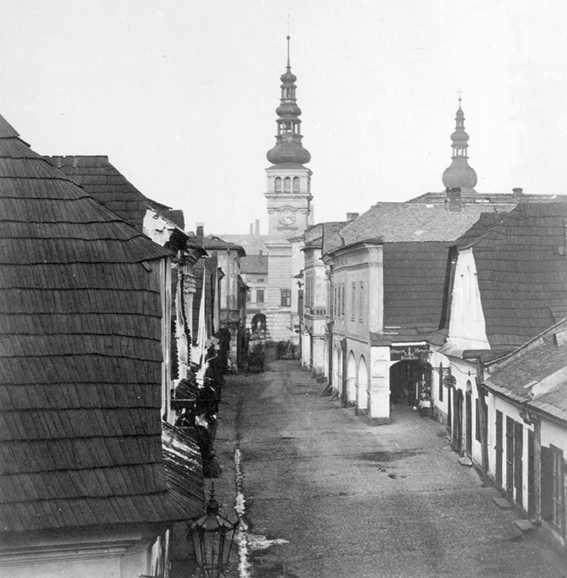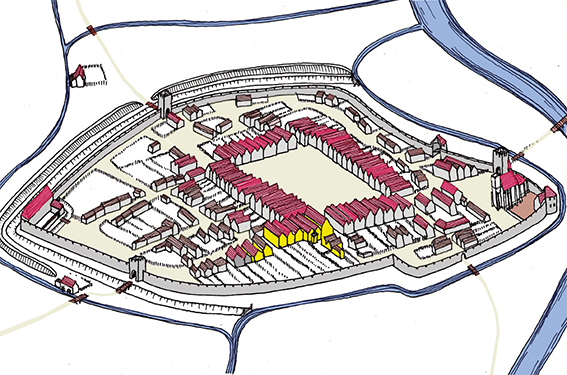Velká Street
Until the middle of the 19th century, Velká (meaning “Large”) Street was the main route through the town of Moravská Ostrava, connecting the Vítkovice (Hrabová) Gate with the Church Gate. According to the oldest surviving maps, the buildings along the street were situated on six parcels (lots) of land, probably dating from the second half of the 14th century. Archeologists found sunken basement areas on all six of these parcels, with beam structures indicating the original medieval building combination of wood and clay. Although some houses in Ostrava may already have had some parts built from masonry (basements, parts of the ground floor) during the late Middle Ages, it was only after a major fire in 1556 that stone became the preferred building material.
Ostrava’s buildings evolved gradually over the centuries, and especially in peripheral areas of the town, some wooden (or partially wooden) buildings remained intact into the second half of the 19th century. The addition of upper floors to originally single-floor buildings was likewise a gradual process. According to a list compiled in 1820, only 23 of the 64 burghers’ houses in Ostrava had an upper floor. By 1859, this number had risen to 39. Most houses consisted of two tracts; the front tract contained the lower hall and a vaulted chamber, while the rear tract contained the kitchen and a living room facing onto the courtyard area. Steps from the lower hall led down to the basement areas and up to the loft (or the upper floor).
From the 1770s, the imperial highway connecting Opava (Troppau) with Těšín (Teschen) was routed along Velká Street. However, in 1842 a new street was laid out (nowadays 28. října Street), passing through the town’s central square, and Velká Street lost its former importance. This caused the area’s development to stagnate, and most of the buildings on Velká Street began to be used as cheap and disreputable taverns and drinking dens. It was not until the final third of the 19th century that the area underwent major changes, as the former single-floor structures with timber-built rear tracts were redeveloped to create large urban buildings.

1a. View of Velká Street from the south-west. This photograph from the 1880s is the oldest surviving record of the street’s appearance in earlier times.
Akce: Otevřít verzi pro tisk

